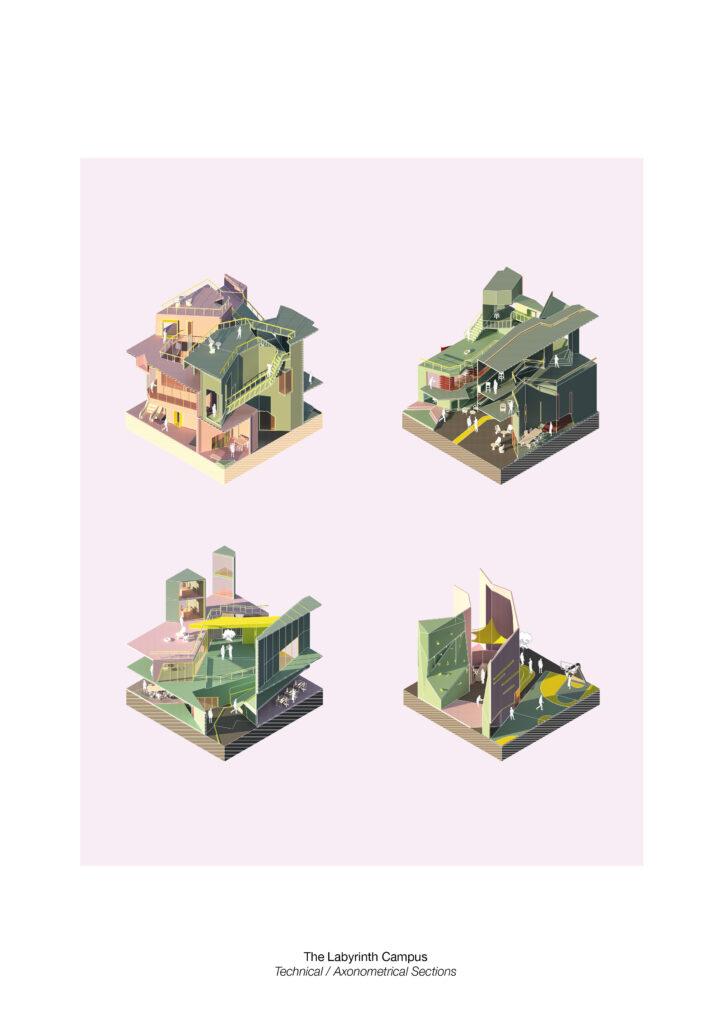
The Labyrinth Campus – Jocelyn Tay
LEARNING
ALTERNATIVE DESIGNS FOR EDUCATIONAL SPACES
A publication on the spatial implications of the future of universities to contribute to the INTREPID EU Cost action.
PROJECT: Crowd-sourced Research
YEAR: 2018
DURATION: 12 months
COMMISSIONER: Intrepid Knowledge network; European Cooperation in Science and Technology COST
LEADING PARTNER: Institute of Social Sciences, University of Lisbon, ISEG

- Exhibition in New Castle
- Exhibition in New Castle
- Exhibition in Lisbon
- Exhibition in Lisbon
The Intrepid COST action was a four-year program and network-building initiative focused on exploring the future of education, with a particular emphasis on universities. The Institute of Social Sciences at the University of Lisbon and ISEG, the leading parties in the project, invited Non Architecture to join the project and develop initiatives aimed at their design community. In this context, Non Architecture launched “Learning – Alternative Designs for Education,” a crowd-sourced research and design contest that collected participants from all around the world. The results of the contest were compiled into a book, which provided an overview of the potential implications and future developments of design for learning spaces. The book included over 55 design concepts, 3 articles, 5 student projects, 9 essays, 3 illustrations, and 2 photo essays. Findings were also shared throughout the project with all the experts involved, in live conferences, exhibitions and workshops.
Through this learning, Intrepid was able to add a more inclusive and visual dimension to their research, bringing fresh and diverse perspectives from creatives around the world.

OLIVIA BINA
PRINCIPAL RESEARCHER AT ICS-ULISBOA, COORDINATOR OF THE INTREPID COST ACTION
There are three reasons, at least, why the concept, methods and networks of NonA provide much needed quality support to the exploration of alternative futures: they can reach fast and wide across nations and cultures, providing precious diversity and plurality of voices, especially younger generations; they bring creative, out of the box thinking to an otherwise colonised space for imaginaries; and they increasingly bridge across disciplines to offer richer answers to the urgent questions of our times.
- UNI-GO – Cheung Yui Ming, Leung Verena, So Cheuk Ying Sharon
- Unbound – Kristijan Dapcevic, Savo Radovic
- The Labyrinth Campus – Jocelyn Tay













